
When you compare a sweatshirt to a sweater, you notice clear differences. A sweater usually feels softer and looks more classic, while a sweatshirt gives off a sporty vibe and feels casual. You see sweatshirts everywhere now. Young people love the relaxed style and comfort. In 2025, the global market for sweatshirts is set to reach $231.16 billion, showing huge growth. The sweater still holds a special place for warmth and style. Choosing between a sweater and a sweatshirt depends on your needs, comfort, and the look you want. The Sweatshirt vs Sweater debate matters more than ever.
The global market for hoodies and sweatshirts was valued at USD 227.31 billion in 2024.
It is projected to grow to USD 241.11 billion in 2025 and reach USD 381.40 billion by 2032.
The increasing demand among young consumers is due to the sporty and elegant look.
Key Takeaways
Sweatshirts are casual and sporty tops. They are made from soft, woven fabrics like fleece. Sweaters are knitted clothes made from wool or cashmere. The global market for sweatshirts is growing fast. It may reach $241.11 billion in 2025. This shows that young people really like sweatshirts. Pick a sweatshirt if you want comfort or for casual trips. Choose a sweater if you need to look more dressed up or formal. Sweaters keep you warm and look classic. They are great for parties and work events. Sweatshirts are easier to wash and usually cost less than sweaters. This makes them good for saving money. It is easier and cheaper to customize sweatshirts. You can show your style with prints and logos. You can wear both sweatshirts and sweaters in layers to stay warm. But they are used for different reasons and styles. Knowing the differences in fit, material, and care helps you pick the right one for your closet.
Sweatshirt vs Sweater Overview
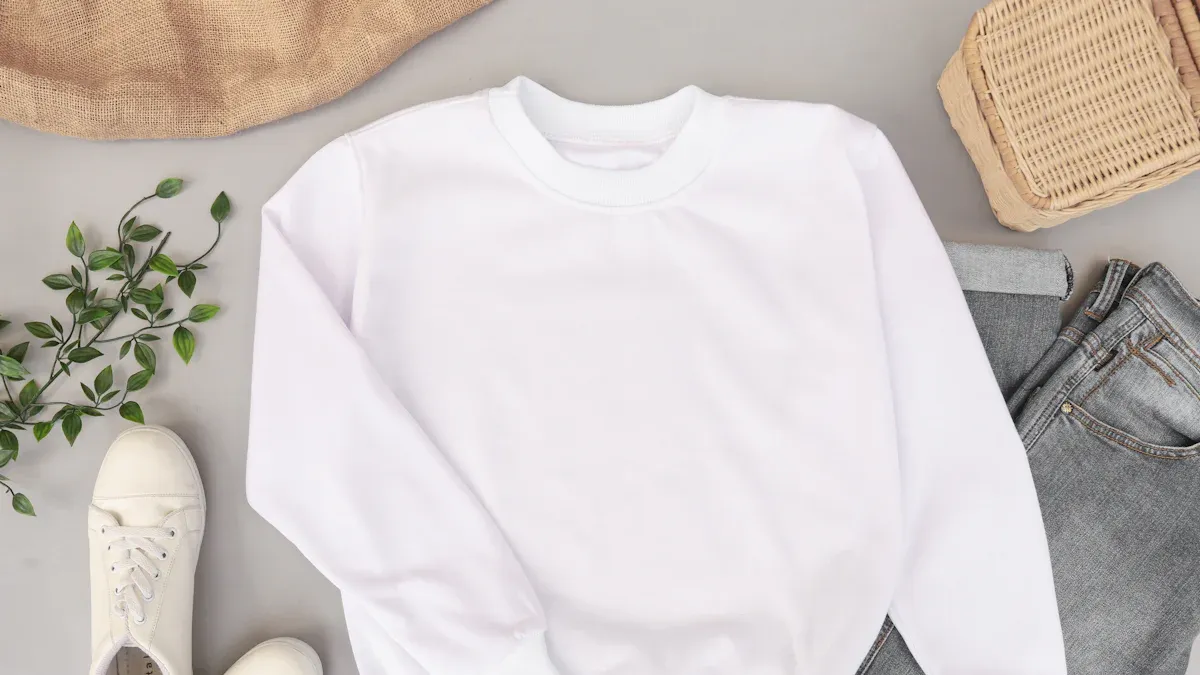
Definitions
When you shop for warm clothes, you see sweatshirt and sweater a lot. These two items look alike, but they are not the same. Each has special features. Let’s look at what each one means so you can tell them apart.
Garment | Definition |
|---|---|
Sweatshirt | A loose, long-sleeved top made from cotton or a cotton-polyester mix. People wear it for sports or on casual days. Sweatshirts can have ribbed cuffs, hems, pockets, or a hood. They feel soft and comfy, great for relaxing or being active. |
Sweater | A knitted top made from wool, cotton, or cashmere. Sweaters keep you warm and come in styles like pullovers and cardigans. You wear a sweater to look classic or stay cozy when it’s cold. |
The main difference is how each is made and what it is made from. Sweatshirts use soft, woven fabric. Sweaters use knitted yarns. This helps you start to understand the sweatshirt vs sweater debate.
Key Differences
You may wonder what makes these two different. The biggest differences are not just about looks. Here is a simple guide to help you compare them:
Feature | Sweater | Sweatshirt |
|---|---|---|
Material | Made from knitted stuff like wool, cashmere, or cotton. | Made from non-knit fabrics like cotton fleece or polyester. |
Fit and Design | Has a more formal or semi-formal look. | Has a relaxed, casual fit for daily wear. |
Warmth | Keeps you warm because of the knit. | Gives warmth with fleece or brushed inside. |
Comfort | Feels very nice if made from good materials. | Feels soft and stretchy for comfort. |
Versatility for Occasions | Good for formal or semi-formal events. | Best for casual, sporty, or streetwear. |
Durability | Needs careful care, can get fuzzy. | Easy to wash, made for lots of use. |
Customization Potential | Hard and costly to customize. | Easy and cheap to add logos or prints. |
Price Point | Costs more because of fancy materials. | Usually cheaper to make and buy. |
Tip: For a fancy dinner, pick a sweater. For a walk or gym, choose a sweatshirt.
Sweaters look more dressed up and feel warmer because they are knit. Sweatshirts are all about comfort and easy care. These differences change how and where you wear them.
Sweaters started as work clothes for fishermen in the 1800s. They kept people warm in tough weather. Sweatshirts came later, in the 1920s, for sports. Now, both are popular in fashion. You see the sweater vs sweatshirt question in stores, online, and in style guides.
When you think about sweatshirt vs sweater, your choice depends on what you need. Want warmth and a classic look? Pick a sweater. Want comfort and a sporty style? Go with a sweatshirt. The best choice is what fits your day.
This overview shows the main differences. Next, you will learn more about materials, styles, and how to pick the right one for you.
Materials & Construction

When you look at a sweater or a sweatshirt, you might think they feel similar. But the fabric and material differences really set them apart. Let’s break down what goes into each one and how the construction shapes their style and comfort.
Sweater Materials
Sweaters come in many types. The most common materials are wool, cotton, and synthetics. Each one gives you a different feel and level of warmth.
Wool
Wool is a classic choice for a sweater. It keeps you warm because it traps heat with tiny air pockets. Wool also wicks away moisture, so you stay dry. You often see wool in premium sweaters, especially in colder places. People love wool for its durability and cozy feel.
Cotton
Cotton sweaters feel soft and breathable. They work best in mild weather. Cotton does not insulate as well as wool, so you might not feel as warm on cold days. But cotton is easy to care for and feels light on your skin.
Synthetics
Synthetic fibers, like acrylic or polyester, make sweaters more affordable. These materials add durability and stretch. They do not keep you as warm as wool, but they last longer and are easy to wash. Some sweaters blend synthetics with natural fibers for a balance of comfort and strength.
Here’s a quick look at the main sweater materials:
Material | Characteristics | Market Appeal |
|---|---|---|
Wool | Warm, durable, moisture-wicking | Premium, cold regions |
Cotton | Soft, breathable, versatile | Popular, mild climates |
Cashmere | Luxurious, super soft | High-end, status symbol |
Synthetic fibers | Durable, easy care | Budget-friendly, mimics natural fibers |
Blends | Mix of natural and synthetic | Balances quality and cost |
Tip: If you want a sweater for winter, pick wool. For spring or fall, cotton works well.
Sweatshirt Materials
Sweatshirts use different materials than sweaters. The most common fabric is cotton, but you also see fleece and blends.
Cotton
Cotton makes sweatshirts soft and comfy. It lets your skin breathe, which is great for everyday wear. Cotton sweatshirts feel light but may not keep you as warm as fleece.
Fleece
Fleece is a superstar in sweatshirts. This fabric feels fluffy and traps heat, making it perfect for chilly days. Fleece sweatshirts are popular for sports, lounging, and outdoor activities. You get warmth without feeling weighed down.
Blends
Many sweatshirts use blends of cotton and polyester. These blends add stretch and make the sweatshirt last longer. Some high-end sweatshirts now use luxury fibers like cashmere or alpaca, giving you a soft feel and a touch of style.
Over the last decade, sweatshirt materials have changed a lot. Designers now use better fabrics and offer more choices, from basic cotton to luxury blends. You can even find sweatshirts with custom textures and finishes.
Construction Methods
The way a sweater or sweatshirt is made affects how it fits and feels. Construction is key to both comfort and style.
Knitting
Sweaters use knitting. This method loops yarn together, creating a stretchy and warm fabric. Knitting gives you many types of sweaters, like pullovers and cardigans. The construction can use set-in sleeves for a fitted look or raglan sleeves for more movement.
Weaving
Sweatshirts use woven fabric, often with a brushed or fleece inside. Weaving makes the fabric smooth and strong. The construction of a sweatshirt focuses on comfort and durability. You get ribbed cuffs, hems, and sometimes a hood or pockets.
Note: The construction of each garment changes how you wear it. Sweaters feel classic and fitted. Sweatshirts feel relaxed and sporty.
When you shop for a sweater or sweatshirt, think about the materials and construction. These details decide how warm, comfy, and stylish you feel.
Styles & Design
When you look at your closet, you probably see a mix of sweater and sweatshirt styles. Each one brings something different to your wardrobe. Let’s break down the most popular options for 2025 and see how you can use them to show off your personal style.
Sweater Styles
Sweater styles in 2025 are more exciting than ever. Designers are moving away from plain looks and bringing in bold, creative ideas. You see sweaters that stand out and help you express yourself.
Designers use unique shapes and textures.
You find cardigans with slashed sleeves and chunky knits with fringe.
Layering is a big trend, so you can mix and match different sweater styles.
Maximalist fashion is everywhere, so people want sweaters that look one-of-a-kind.
You see more people stepping outside the usual fashion rules and picking sweaters that match their own style.
Let’s look at three classic sweater styles you will see this year:
Pullover
A pullover is a simple sweater you pull over your head. You get warmth and comfort without any buttons or zippers. Pullovers come in many colors and patterns. You can wear them with jeans for a casual look or dress them up with a skirt.
Cardigan
A cardigan opens in the front and usually has buttons. You can wear it open or closed. In 2025, cardigans are getting a makeover. Some have slashed sleeves or chunky fringe. You can layer a cardigan over a t-shirt or dress. This style works for school, work, or a night out.
Turtleneck
A turtleneck sweater has a high, close-fitting collar. It keeps your neck warm and looks stylish. You can wear a turtleneck alone or under a jacket. This style is great for cold days and gives you a classic look.
Sweatshirt Styles
Sweatshirt styles are changing fast. You see more choices than ever before. The global market for sweatshirts is growing, and people love the comfort and cool look they bring.
Oversized sweatshirts are everywhere. They feel cozy and look trendy, thanks to the athleisure trend.
Hoodies are popular with bold logos and distressed details. They give you a streetwear vibe.
Crewneck sweatshirts are simple and clean. Many people like the monochrome look for a more refined style.
Here are three sweatshirt styles you will want to try:
Crewneck
A crewneck sweatshirt has a round neckline and no hood. It looks neat and works for many occasions. You can wear a crewneck to school, to the park, or even to a casual dinner. Many people like the simple, minimal style.
Hoodie
A hoodie is a sweatshirt with a hood. It often has a front pocket. Hoodies are perfect for relaxing or going out with friends. In 2025, you see hoodies with big logos and fun designs. This style is great if you want to stand out.
Oversized
Oversized sweatshirts are big and roomy. They feel soft and comfortable. You can wear them with leggings or jeans. This style is perfect for lounging at home or running errands. Many people love the relaxed fit and sporty look.
Customization
You can make your sweater or sweatshirt unique with customization. Many brands let you pick colors, add your name, or choose special prints. This makes your style personal and fun.
Customization Aspect | Impact on Consumer Purchasing Decisions |
|---|---|
Seamless Customization | You can buy from small brands online and get exactly what you want. |
Sustainability | Many people now choose organic fabrics and care about how clothes are made. |
AI & Automation | Brands use technology to make custom products fast, so you get your order quickly. |
Quality of Printing | Good printing makes your sweater or sweatshirt look better and last longer. |
Tip: If you want to show off your own style, try customizing your next sweater or sweatshirt. You can pick colors, add patches, or even design your own print.
You have so many choices when it comes to sweater and sweatshirt styles in 2025. Whether you like bold looks or simple designs, you can find a style that fits you. Try something new and make your wardrobe your own.
Sweatshirt vs. Sweater: Uses
Everyday Wear
You probably reach for a sweatshirt or a sweater almost every day. Both work well for daily life, but you might notice some differences in how people use them. Sweatshirts have become the top pick for casual wear. You see them everywhere—at the grocery store, walking the dog, or hanging out with friends. People love how easy it feels to throw on a sweatshirt and go. According to recent surveys, 78% of people prefer sweatshirts for lounging at home, and 70% choose them for outdoor activities. That comfort and relaxed style make sweatshirts a go-to for most casual occasions.
Sweaters, on the other hand, show up more when you want to look a bit more put together. You might wear a sweater to a family dinner or a small social event. Surveys show that 60% of people pick sweaters for social events, and 75% wear them in professional settings. Sweaters give you a classic look that works for many occasions, especially when you want to feel cozy but still look neat.
Here’s a quick look at how people use each one:
Context | Sweatshirts Preference | Sweaters Preference |
|---|---|---|
Outdoor Activities | 70% | N/A |
Formal Gatherings | N/A | 65% |
Lounging at Home | 78% | N/A |
Social Events | N/A | 60% |
Professional Settings | N/A | 75% |
Tip: If you want to stay comfortable at home or outside, grab a sweatshirt. If you need to look sharp for work or a party, a sweater is your best friend.
Sports & Athleisure
Sweatshirts shine when it comes to sports and athleisure. You see athletes and gym-goers wearing sweatshirts before and after workouts. The soft fabric keeps you warm and helps you relax your muscles. Sweatshirts also fit right in with the athleisure trend, where you mix sporty clothes with everyday outfits. You can wear a sweatshirt with leggings or joggers and look stylish while staying comfortable.
Sweaters do not usually show up at the gym or on the field. They work better for less active occasions. You might wear a sweater for a walk in the park or a casual lunch, but you probably will not pick it for sports. Sweatshirts win for active, casual occasions and versatility.
Formal & Casual
You can dress up or dress down with both a sweater and a sweatshirt, but each one fits different occasions. Sweatshirts work best for casual settings. You can wear them to school, on errands, or when you want to relax. The casual look of a sweatshirt makes it perfect for weekends and low-key gatherings.
Sweaters step in when you need to look a bit more formal. You can wear a sweater over a collared shirt for work or to a nice dinner. Many people choose sweaters for formal gatherings, with 65% saying they prefer them for these occasions. Sweaters also work for casual events, but they give you a polished touch that sweatshirts do not.
Note: If you want one piece that works for many occasions, think about what you do most. Sweatshirts are great for casual wear and active days. Sweaters help you look sharp for special occasions.
Comfort & Fit
Sweater vs Sweatshirt: Comfort
When you think about comfort, you probably want something that feels good all day. A sweater gives you steady warmth and comfort, especially when the air feels dry and cold. The knitted fabric hugs your body and keeps you cozy without making you feel sweaty. Many people love wearing a sweater for its classic feel and gentle touch on the skin.
A sweatshirt, on the other hand, brings a different kind of comfort. The fleece lining feels plush and soft right away. If you step outside on a damp, chilly morning, you might reach for a sweatshirt because it keeps you warm and relaxed. People often say sweatshirts are their top pick for lounging or casual days. Both options have their strengths, but you may find that sweatshirts win when you want instant comfort and a laid-back vibe.
Tip: If you want warmth and comfort for a relaxed day, grab a sweatshirt. For steady warmth and comfort in dry cold, a sweater is a great choice.
Fit & Flexibility
Fit can change how you feel in your clothes. Sweatshirts usually have a relaxed fit. The fleece fabric stretches and moves with you, so you get a comfortable fit that works for almost any activity. You can bend, stretch, or just relax on the couch, and your sweatshirt will keep up.
Sweaters often have a more structured fit. The finer knits look neat and stylish, but they might not stretch as much. If you want a sharp look, a sweater is perfect. If you want flexibility and ease, a sweatshirt is the way to go.
Here’s a quick look at what affects fit and flexibility:
Garment | Fit Style | Flexibility | Best For |
|---|---|---|---|
Sweater | Structured, neat | Less stretch | Work, dinners, layering |
Sweatshirt | Relaxed, roomy | High flexibility | Sports, lounging, travel |
Sweatshirts use fleece for warmth and comfort, making them easy to move in.
Sweaters use finer knits, which look great but may feel less flexible.
The fabric choice changes the comfort level and how you move.
Layering
Layering and versatility matter when you want to stay comfortable in changing weather. You can wear a sweater over a shirt or under a jacket for extra warmth. Sweaters work well for layering because they come in many thicknesses and styles. You can dress up or down with a sweater, making it a smart choice for many outfits.
Sweatshirts also shine when it comes to layering. You can throw a sweatshirt over a tee or under a coat. The relaxed fit means you never feel squeezed. Sweatshirts give you versatility for school, sports, or just hanging out.
Note: Both sweaters and sweatshirts offer layering and versatility, but your choice depends on the look and comfort you want.
No matter what you pick, you can find warmth, comfort, and a comfortable fit with both a sweater and a sweatshirt. Try different styles to see what feels best for you.
Cost & Value
Price Range
When you shop for a sweatshirt or sweater, prices can be very different. Sweatshirts are usually cheaper than sweaters. You can find a basic sweatshirt for about $20. These are often made from cotton or polyester blends. Designer sweatshirts can cost more, but most are still affordable. Sweaters start at a higher price. Wool or cashmere sweaters often cost $50 or more. If you want a fancy sweater, it might cost over $200. The price changes based on the material, brand, and where you buy it.
Tip: If you want to save money, pick sweatshirts made with cotton blends. For special events, a wool sweater is worth spending more.
Factors Affecting Cost
You may wonder why some sweatshirts and sweaters cost more. Many things change the price. Here are the main reasons:
The material matters a lot. Wool and cashmere sweaters cost more because they feel soft and last longer. Sweatshirts made from fleece or organic cotton also cost more than basic ones.
Where the item is made can change the price. Factories in some countries pay workers more. If your sweater comes from a place with high wages, it costs more.
How the item is made also matters. Machines make sweatshirts fast and cheap. Hand-knitted sweaters take more time and skill, so they cost more.
Special labels or tags add to the price. Sweatshirts with big logos or cool designs cost more.
Some materials have extra features. For example, a sweatshirt that keeps you dry or a sweater that is extra warm will cost more.
You get what you pay for. Good materials and careful work mean your sweater or sweatshirt lasts longer and feels better.
Retail Considerations
If you own a store or want to know how stores think, you see that sweatshirts and sweaters need different plans. Sweatshirts sell well all year. People want them for school, sports, and relaxing. Stores keep lots of sweatshirts because many people buy them. Sweatshirts are also used for ads, since there is space for big logos.
Sweaters are different. Stores sell more sweaters in cold months or for special times. Sweaters cost more to make, so stores focus on quality and style. You see sweaters with other fancy items. Stores use sweaters to attract people who want warmth and a nice look.
Here’s a quick look at how stores handle sweatshirts:
Aspect | Sweatshirts (Pullover Hoodies) |
|---|---|
Year-round Demand | Always in demand, suitable for various weather conditions. |
Affordable Options | Wholesale prices allow for cost-effective inventory management. |
Versatility | Can be styled in multiple ways, appealing to a broad audience. |
Branding Opportunities | Large area for logos and designs, making them ideal for promotional items. |
Durability | Made from sturdy materials, ensuring longevity and customer satisfaction. |
Eco-Friendly Options | Availability of sustainable materials, appealing to environmentally conscious consumers. |
Note: If you want something that sells well and fits many styles, sweatshirts are a smart pick for stores. Sweaters are best for people who want something special and will pay more for it.
Both sweatshirts and sweaters give you value, but in different ways. Your choice depends on your budget, style, and what you need for your closet.
Care & Maintenance
Taking good care of your favorite sweater or sweatshirt helps them last longer and look better. You don’t need fancy tools or a lot of time—just a few smart habits.
Sweater Care
Sweaters need a gentle touch. If you want your sweater to stay soft and keep its shape, follow these simple steps:
Always check the care label before washing. Some sweaters need hand washing, while others can go in the machine on a gentle cycle.
Use cold water and a mild detergent made for wool or silk. Hot water can shrink your sweater and make it rough.
Never wring out your sweater. Instead, press the water out gently.
Lay your sweater flat to dry. Hanging it up can stretch the shoulders and make it lose its shape.
Give your sweater a break between wears. This lets the fibers bounce back and keeps it looking fresh.
Tip: Fold your sweater instead of hanging it. This helps it keep its shape and stops the shoulders from sagging.
If you want to store your sweater for a while, wash it first. Moths love dirty sweaters! Use a breathable bag and add a natural moth repellent, like cedar.
Sweatshirt Care
Sweatshirts are easier to handle. You can usually toss your sweatshirt in the washing machine without worry. Still, a few tricks help keep it looking new:
Wash your sweatshirt in cold water on a gentle cycle. This keeps the color bright and the fabric soft.
Turn your sweatshirt inside out before washing. This helps prevent fading and pilling.
Use a regular detergent, but skip the bleach.
Lay your sweatshirt flat to dry, or use a low heat setting in the dryer. High heat can shrink it or make it lose shape.
Fold or hang your sweatshirt when it’s dry. You don’t have to worry much about stretching.
Note: Sweatshirts can pill or lose color if you wash them too often. Try to wash only when needed.
Longevity Tips
Want your sweater and sweatshirt to last for years? Here are some expert tips:
Always follow the care label for both your sweater and sweatshirt.
Wash in cold water to protect the fibers and keep colors bright.
Use a mesh laundry bag for delicate sweaters to stop them from getting tangled.
Air dry whenever you can. This keeps the fabric strong and helps both your sweater and sweatshirt hold their shape.
Treat stains right away. The sooner you act, the better your chances of saving your favorite piece.
Store your sweater and sweatshirt in a cool, dry place. Fold sweaters to avoid stretching, and hang sweatshirts if you like.
Try steaming instead of ironing. Steam is gentle and helps keep the fabric looking smooth.
Callout: A little extra care goes a long way. With these habits, you can enjoy your sweater and sweatshirt season after season!
History & Evolution
Sweater Origins
Long ago, sweaters were made for hard work. Fishermen wore them to stay warm at sea. The Aran sweater had special cable knit designs. These patterns showed family history and were useful too. Later, machines started making sweaters. This made sweaters cheaper and easier to buy. In the early 1900s, designers like Coco Chanel made sweaters stylish. Sweaters were not just for warmth anymore.
Here’s how sweaters changed over time:
Fishermen needed sweaters for warmth and strength.
The Aran sweater had cool patterns that meant something.
Factories made sweaters faster during the industrial revolution.
Designers made sweaters look stylish in the 1900s.
In the 1970s, big sweaters became popular for a relaxed style.
In the 1980s, sweaters with big brand names showed status.
Today, many sweaters use eco-friendly materials to help the planet.
Note: Sweaters went from work clothes to fashion. Now, they mix comfort and style.
Sweatshirt Origins
The sweatshirt has its own story. It started as clothing for athletes. They wanted something comfy for training. The thick fabric kept them warm and let them move. In the 1930s, factories made sweatshirts for everyone. Workers and students liked them because they were soft and cheap.
Here are some big moments in sweatshirt history:
Athletes wore sweatshirts for warmth and practice.
Factories made sweatshirts for everyone in the 1930s.
In the 1960s and 1970s, young people liked sweatshirts to stand out. Hoodies became a sign of rebellion.
In the 1980s, big brands made sweatshirts trendy.
Now, sweatshirts come in many styles, like crewnecks and hoodies.
Tip: Sweatshirts started in sports but now fit into all parts of life.
Fashion Trends
Fashion changes quickly. Both sweaters and sweatshirts have kept up. In the last ten years, athleisure became very popular. Brands like Lululemon made casual clothes cool. People wear sweatshirts and sweaters every day. You see sweatpants and hoodies at school, work, and even parties. Streetwear and celebrities made sweatshirts even more popular.
Here’s a table showing how trends changed these clothes:
Trend | Impact on Sweater | Impact on Sweatshirt |
|---|---|---|
Athleisure | More casual styles | Everyday staple |
Streetwear | Bold patterns | Hoodies, logos |
Sustainability | Eco-friendly yarns | Recycled fabrics |
Callout: Pick a sweater for a classic look or a sweatshirt for sporty comfort. Both are trendy and show your style.
Suitability
Age Groups
You might notice that people of different ages pick a sweatshirt or sweater for different reasons. Teens and young adults love sweatshirts because they feel trendy and comfortable. You see them wearing sweatshirts at school, at the mall, or just hanging out with friends. Sweaters do not get as much attention from this group, but some still wear them for special events.
People in their 20s and 30s start to look for quality and easy-care clothes. They want a sweatshirt that lasts and a sweater that looks stylish but is simple to wash. When you get to your 40s and 50s, you might care more about dressier styles. Many in this group choose a sweater for work or family dinners, while a sweatshirt is less common unless it is for relaxing at home.
Here’s a quick table to show you how age groups choose between these two:
Age Group | Preferences for Sweatshirts | Preferences for Sweaters |
|---|---|---|
Teens and Early 20s | Favor trendy and comfortable options | Less focus on sweaters |
20s and 30s | Look for quality, easy-care garments | Stylish and versatile choices |
40s and 50s | Shift to dressier styles, less emphasis on casual wear | Prefer functional and easy-care options |
Younger shoppers, especially those between 15 and 35, are leading the way in sweatshirt trends. Older adults often pick a sweater for its function and easy care. In children’s fashion, sweatshirts are everywhere because they are easy to put on and take off. Sweaters also show up in children’s fashion, especially for holidays or family photos.
Tip: If you want something cool and comfy, go for a sweatshirt. If you need to dress up, a sweater is a smart pick.
Gender Differences
You might wonder if men and women wear sweatshirts and sweaters the same way. The answer is no. There are some clear differences in how each group picks and styles these clothes.
Ladies’ sweatshirts usually have a slimmer fit, narrower shoulders, and shorter sleeves. Men’s sweatshirts are boxier and roomier.
Women’s styles often use blended fabrics like elastane or modal, which feel soft and stretchy. Men’s sweatshirts use denser materials for a sturdy feel.
Women’s sweaters often have tapered cuts and fun details, like buttons or patterns. Men’s sweaters look more basic and have a boxy shape.
You also see differences in pockets and waistlines. Men’s joggers and sweatpants have deep pockets, while women’s versions may not. Women’s sweatpants sit higher on the waist, while men’s sit lower.
Note: If you want a sweatshirt or sweater that fits just right, check if it’s made for men or women. The cut and fabric can make a big difference in comfort.
Regional Terms
You might hear different words for a sweatshirt or sweater depending on where you live. In the United States, people use the word sweatshirt for a casual, sporty top and sweater for a knitted, warmer top. In the UK, people sometimes call a sweater a jumper. Australians might use the word jumper too, but they also say windcheater for a sweatshirt.
Here are some common terms you might hear:
United States: sweater, sweatshirt
United Kingdom: jumper (for sweater), sweatshirt
Australia: jumper (for sweater), windcheater (for sweatshirt)
If you travel or shop online, knowing these terms helps you find what you want. No matter what you call them, both a sweater and a sweatshirt can keep you warm and stylish.
Callout: Whether you are shopping for yourself or for children’s fashion, knowing the right term helps you get the perfect fit for your needs.
Choosing
For Consumers
You want to pick the right piece for your closet. Start by thinking about your daily life. If you spend a lot of time outside or need something for sports, a sweatshirt works best. It feels soft and keeps you warm on chilly mornings. You can wear it to the gym, for a walk, or just to relax at home.
If you need something for work, school, or a family dinner, a sweater gives you a classic look. It feels cozy and looks neat. Wool sweaters keep you warm in winter. Cotton sweaters work well in spring or fall. You can dress up a sweater with a shirt underneath or wear it alone for a simple style.
Tip: Try both in your wardrobe. Use a sweatshirt for comfort and a sweater for style.
For Retailers
You want to stock items that sell well and fit your customers’ needs. Sweatshirts move fast, especially with younger shoppers. They work for all seasons and offer lots of room for logos or custom prints. You can offer sweatshirts in many colors and sizes to reach a wide audience.
Sweaters attract buyers who want quality and a polished look. They sell best in colder months or during holidays. Offer sweaters in different materials, like wool or cotton, to meet different budgets. You can also highlight eco-friendly options for shoppers who care about the planet.
Product | Best Season | Top Buyers | Selling Point |
|---|---|---|---|
Sweatshirt | All year | Teens, young adults | Comfort, style, prints |
Sweater | Fall, winter | Adults, professionals | Warmth, classic look |
Note: Stock both to cover every season and style.
For Fashion Enthusiasts
You love to show your style. Mix a sweatshirt with jeans for a streetwear look. Try an oversized sweatshirt for a trendy vibe. Add patches or prints to make it your own. For a more dressed-up outfit, layer a sweater over a collared shirt. Play with colors and textures. A chunky sweater stands out in a crowd.
You can even blend both in one outfit. Wear a thin sweater under a sweatshirt for extra warmth and a cool layered look. Fashion lets you break the rules and try new things.
Use a sweatshirt for bold, casual outfits.
Pick a sweater for classic, layered looks.
Combine both for something unique.
Callout: Your style is your story. Use a sweater or a sweatshirt to show who you are.
You now know the key differences between a sweater and a sweatshirt. Both keep you warm, but a sweater feels classic while a sweatshirt feels sporty. You can use a sweater for work or a nice dinner. A sweatshirt works best for relaxing or outdoor fun. Add both to your wardrobe for more options. Each one can become a wardrobe staple. When you build your wardrobe, think about your style and comfort. In 2025, you get to show your personality with every sweater and sweatshirt you choose.
FAQ
What is the main difference between a sweatshirt and a sweater?
You will notice that a sweatshirt uses soft, woven fabric like fleece or cotton. A sweater uses knitted yarns, such as wool or cashmere. Sweatshirts feel sporty and casual. Sweaters look classic and feel warmer.
Can you wear a sweatshirt to a formal event?
You probably should not wear a sweatshirt to a formal event. Sweatshirts work best for casual or sporty settings. If you want to look polished, pick a sweater or another dressier option.
How do I stop my sweater from shrinking?
Always check the care label first. Wash your sweater in cold water. Lay it flat to dry. Never use hot water or a dryer. These steps help your sweater keep its shape.
Are sweatshirts good for working out?
Yes! Sweatshirts feel great for warming up or cooling down at the gym. The soft fabric keeps you comfortable. You can move easily in a sweatshirt, so it works well for sports and exercise.
Which is warmer: a sweater or a sweatshirt?
A wool sweater usually keeps you warmer than a sweatshirt. The knitted yarn traps heat better. Sweatshirts with fleece lining also feel warm, but sweaters win for cold weather.
Can I customize both sweaters and sweatshirts?
You can customize both, but sweatshirts make it easier. You can add prints, patches, or logos to a sweatshirt. Sweater customization costs more and takes longer because of the knit fabric.
What is the best way to store sweaters and sweatshirts?
Fold your sweaters and keep them in a drawer or on a shelf. This helps them keep their shape. You can hang sweatshirts or fold them. Always store both in a cool, dry place.




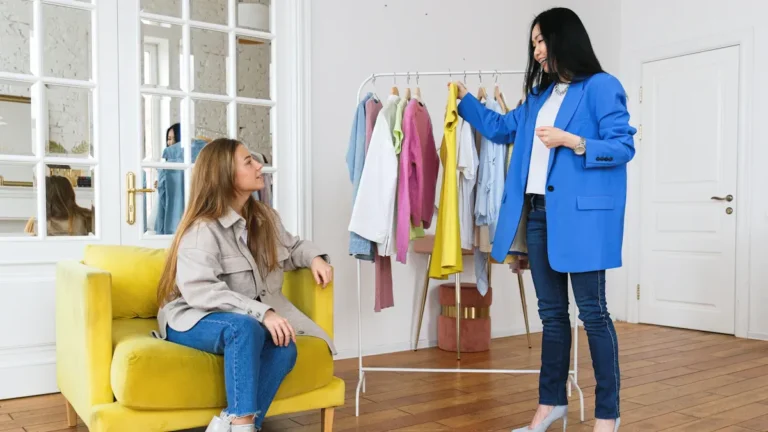

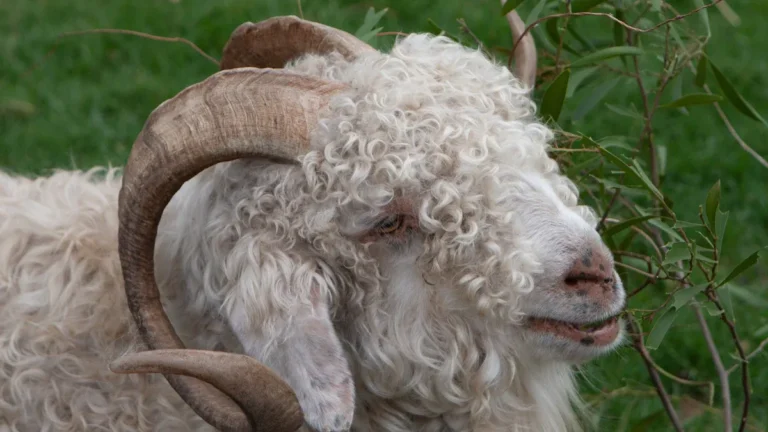


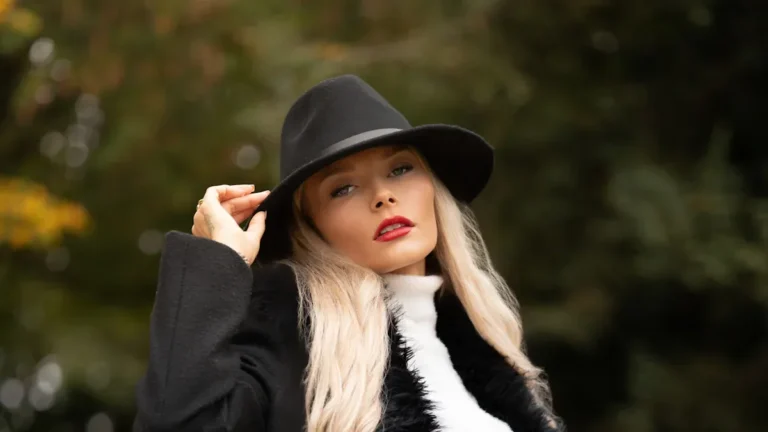
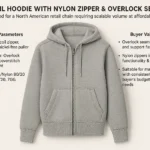
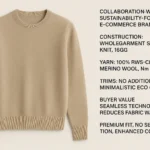



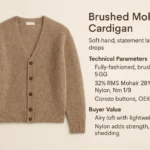
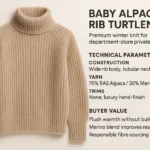
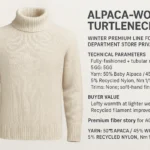
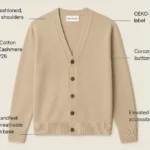
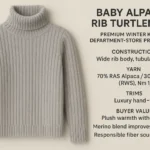
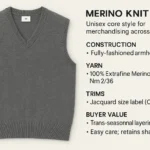
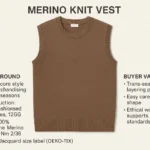
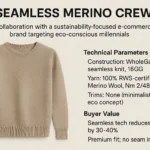

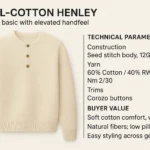
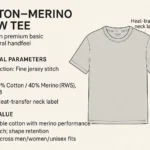
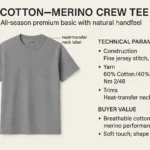

3 thoughts on “Sweatshirt vs Sweater Comprehensive Comparison for 2025”
Pingback: A Complete Guide to Pocket Types and Their Roles in Modern Garment Design
Pingback: A Guide to Styling Crew Neck, Round Neck, V-Neck, and Hoodie Sweaters
Pingback: Worsted vs Aran Yarn Guide for Choosing the Right Weight